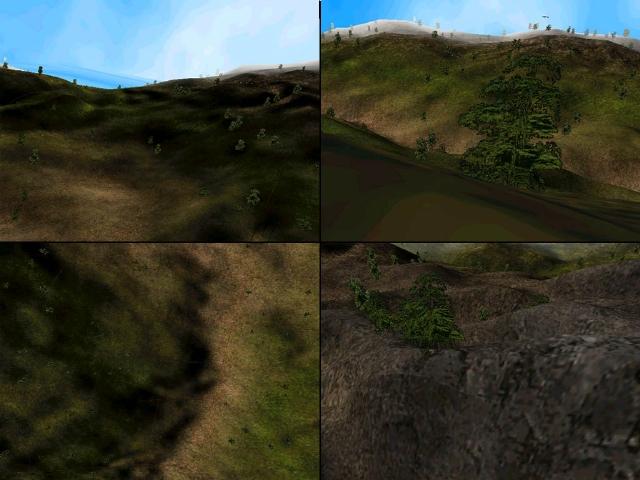 |

Submitted by , posted on 29 April 2000
|
 |

Image Description, by

Here is an image of a engine that a friend of mine and I are designing. This shot shows the landscape engine that I am currently working on. It is a fairly standard engine with features as:
Polygon based, Quad-tree based visibility culling
All textures generated as needed on the fly with a cache to store textures that are re-used from frame to frame.
A 2 meg texture cache is all that is needed to have a full multi-textured landscape of nearly infinite size
Multi-Texture blending (done in software)
Vertex gouraud shading burnt into the textures at blend time as well to eliminate shade popping when changing LOD levels of quad-tree leafs
Textures generated at various LOD
Simple LOD (reduce quad-tree poly count by power of 2) with a post-pass to elimate edge cracks
I have also tested this with detail maps up close with breaks up the bi-linear filtering nicely (not enabled in these shots). I'm currently working on using Perlin Noise to generate my a more organically chaotic blending for my textures as they currently are only blended from vertex to vertex. I'm also gonna implement a ROAMing sort of CLOD instead of my DCLOD (discrete and crappy LOD). Runs at a very good frame rate as well.
|
|

